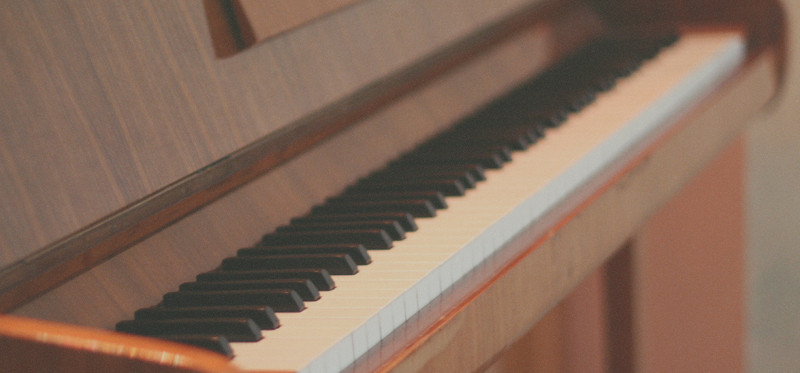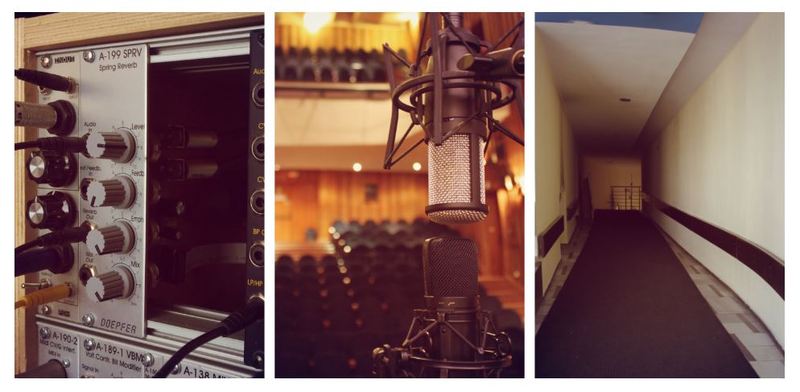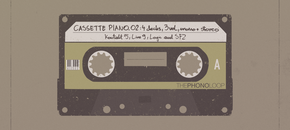- top rated
The Idea & Process

One of the main improvements of Cassette Piano.02 is a completely new set of samples of an (not so perfect) old upright piano recorded in a ballet training room (in both stereo and mono, with mics at the back of the piano) which resulted in surprisingly organic and tasty sound with all kinds of little imperfections. In order to make the best use of those recordings, and to further expand the sound capabilities of the instrument, four different decks were used to process the samples.
- Deck A STEREO - the highest quality, very low pitch instability, plus it was recorded in stereo
- Deck A MONO - the same quality as the one above but recorded in mono
- Deck B MONO - the same one used in previous instruments (Cassette Piano, Cassette Keys.01, Cassette Mallets.01), slightly loose drive belt introduces a lot of pitch instability (sounds great when transposed down)
- Deck C MONO - the noisiest deck of all with medium amount of pitch instability
- Deck D MONO - similar to deck A but with more instability in pitch and overall sound
Every note has been carefully denoised with a high quality algorithm to avoid noise stacking when playing more than one note (there’s still some noise left in the samples to avoid denonising artifacts). Noise can still be added with the noise knob - it’s much more flexible this way and allows the ability to adjust the volume of the noise independently whilst also applying parameters such as filtering. It also creates a more realistic sound, so when playing a five voice chord, only one sample of noise instead of five stacked on top of each other will be heard.

In addition, there are also features you may already know from previous instruments in this series, such as the sample start knob (controlled with the GUI or Mod Wheel) which allows you to control initial transients while designing your sound. Moreover, because of the fact that this kind of instruments sounds great when transposed down (it really adds to the overall ‘lofiness’ of the sound) there’s an octave down switch in the GUI now.
And as the last thing - there’s now also a simple 2 band equaliser (Instrument Tone) located at the bottom of the GUI.
The End Result
Useful and fun production tool - If you like vintage sounds and you're looking for something to enhance your production toolbox, then this product will be for you.
Simulated Round Robin - Makes faster note passages sound more realistic and adds to the overall nonlinearity of the instrument - check out the introduction video to hear it in action.
Main Features
- Available in multiple popular formats: SFZ ,Kontakt 5, Ableton Live 9, Logic (Each sold separately or within a Multiformat bundle)
- 5 GB of samples (1325 samples in total)
- Recorded on 4 different decks
- Mono and Stereo versions
- 5 noise samples (each around 2 minutes long)
- 3 velocity layers
- Organic sound with lots of little imperfections
- 5 basic presets
System Requirements
- Compatible with any SFZ player, for example: Plugin Boutique Zampler (Free)
Any references to any brands on this site/page, including reference to brands and instruments, are provided for description purposes only. For example references to instrument brands are provided to describe the sound of the instrument and/or the instrument used in the sample. Plugin Boutique do not have (nor do they claim) any association with or endorsement by these brands. Any goodwill attached to those brands rest with the brand owner. Plugin Boutique or its Suppliers do not accept any liability in relation to the content of the product or the accuracy of the description. "RHODES" is a registered trademark of Joseph A Brandstetter.
